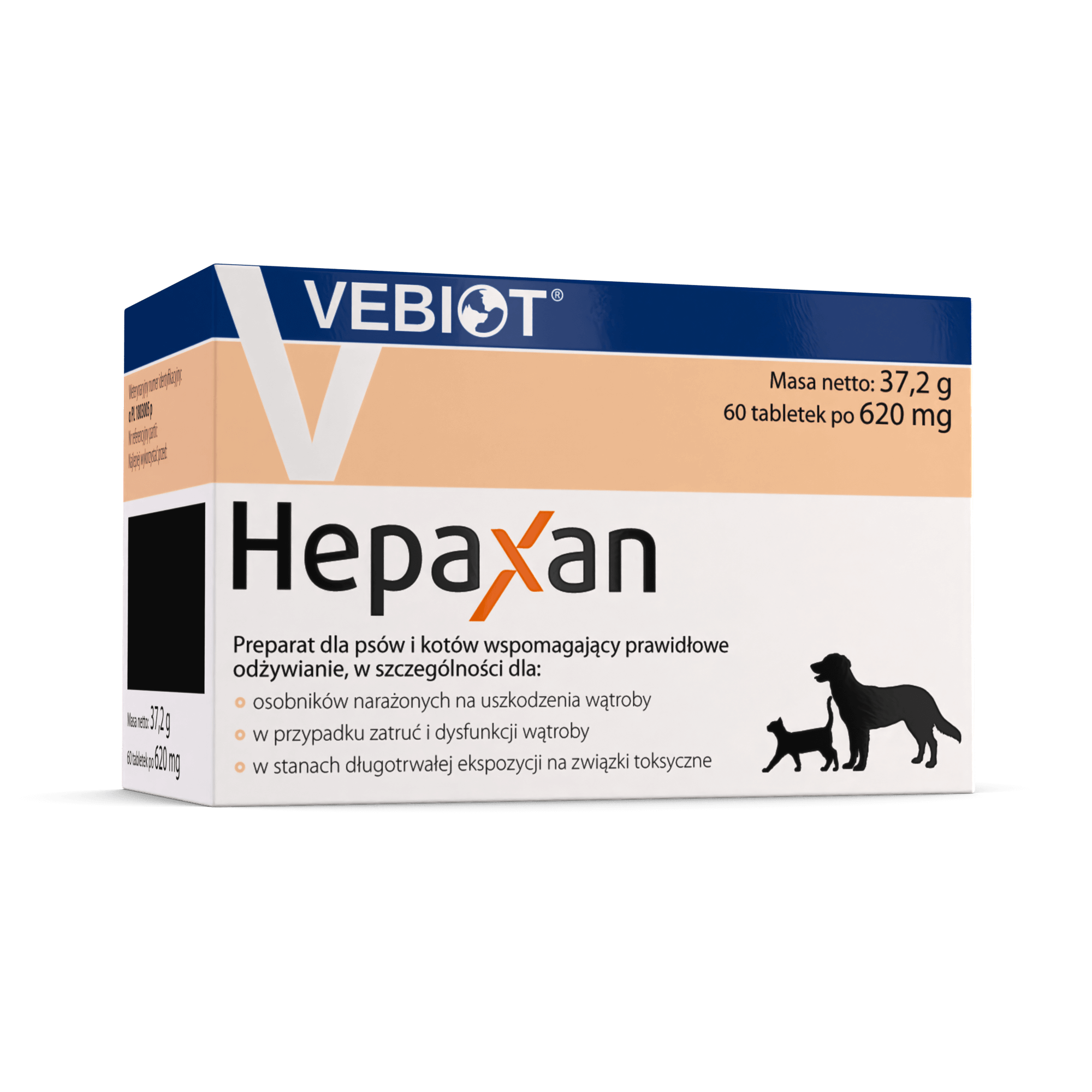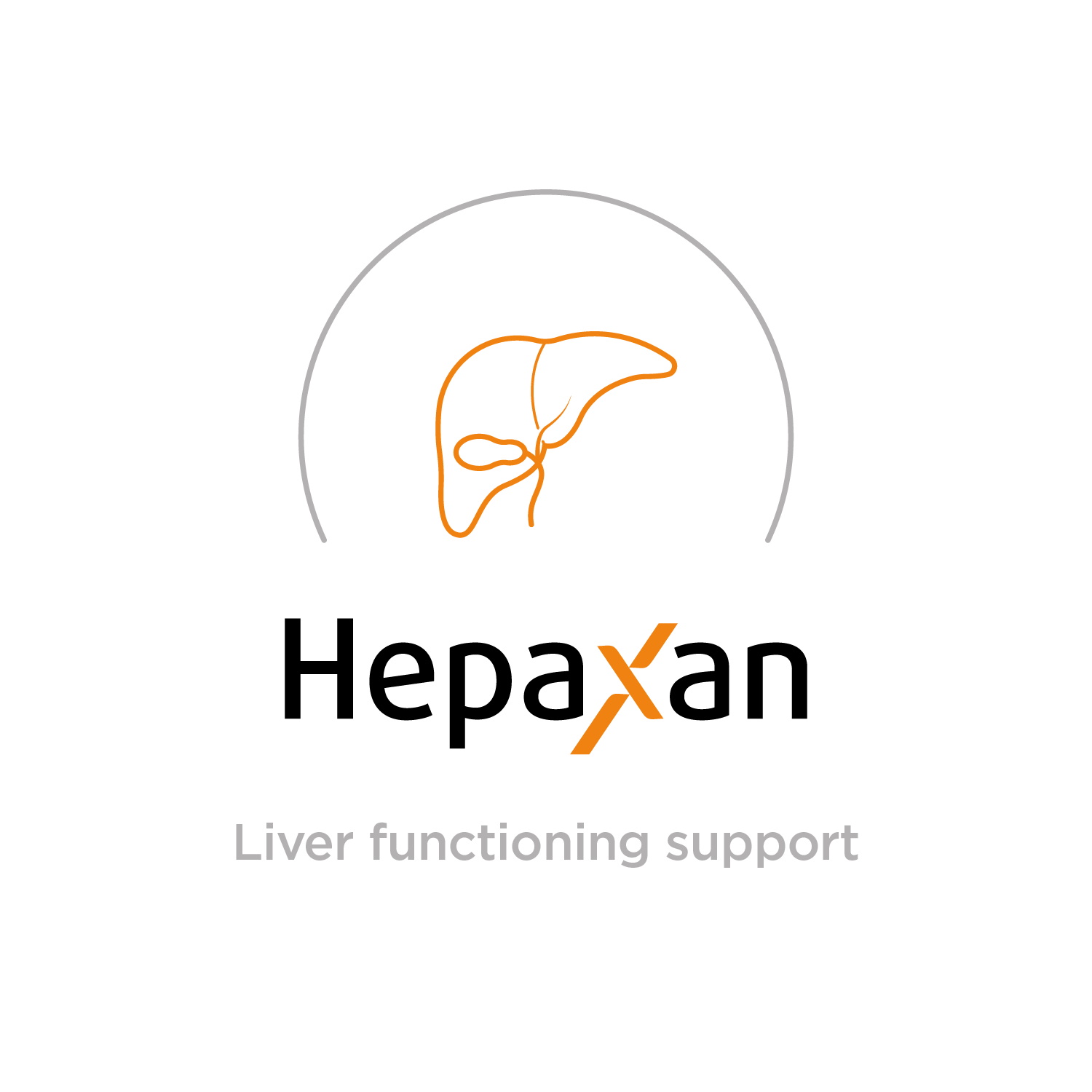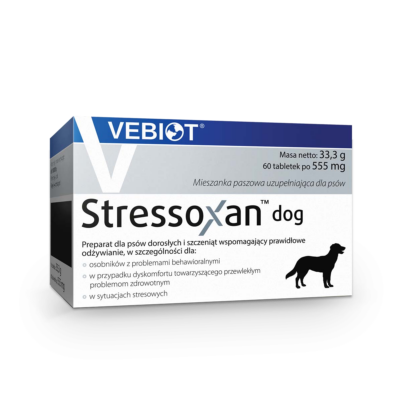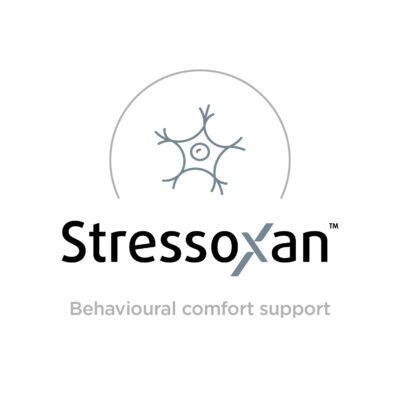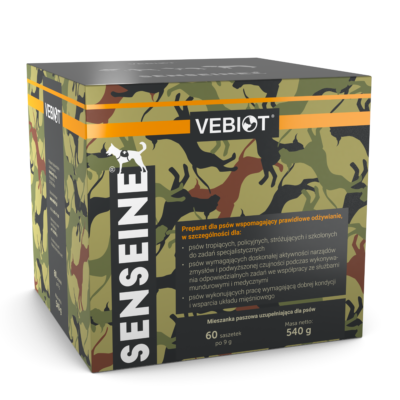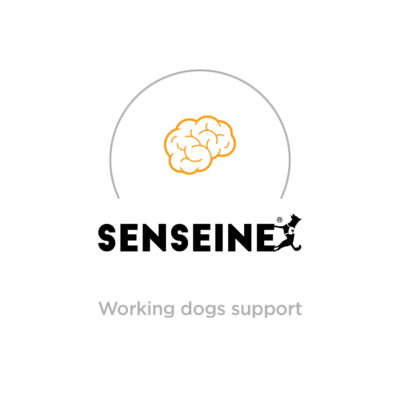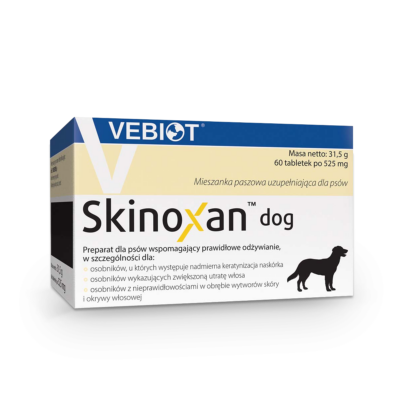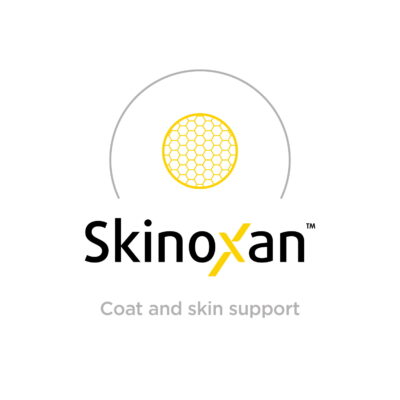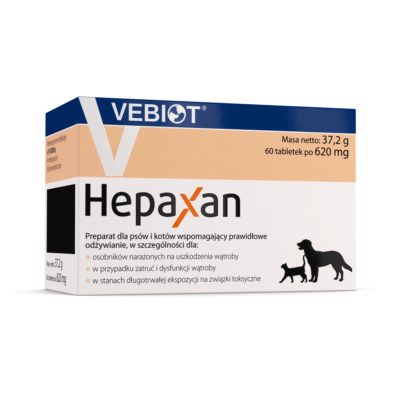Details
Composition of Hepaxan
The ingredients contained in Hepaxan support the liver in detoxification and aid the regeneration of the organ.
Silybin-phospholipid complex, standardized for 30% silybin contest, provides high level of hepatoprotection. It is characterized by high bioavailability and a positive influence on the liver regeneration processes, in that it stimulates proliferation of hepatocytes and inhibits fibrosis processes.
Compounds contained in yeast products (SAMe) have a protective function against liver damage. In addition, they increase the efficiency of the processes that take place in hepatocytes.
Zinc is a mineral that is part of liver enzymes involved in the metabolism of xenobiotics.
Vitamin E is an antioxidant preventing damage to the DNA and the cell membranes of hepatocytes.
Why is it important for a pet’s liver to function properly?
The liver is an extremely important organ in the dog’s/cat’s body and performs many vital functions. First of all, it purifies the body of toxins and other harmful substances. It is involved in such important processes as digestion. It also indirectly enables the absorption of carbohydrates and fats. It regulates the water balance in the body and blood circulation. It also plays a very important role in the pet’s body thermoregulation.
Liver problems of a dog/cat
Liver problems among pets can occur frequently. They affect both old and young pets. They have a variety of symptoms. The following may be observed: diarrhoea, weight loss, vomiting, loss of appetite, lethargy, fever, drinking more water than usual. The dog may also have a larger, swollen and painful abdomen. Yellowing of the whites of the eyes and/or gums may also be observed. When moving the dog/cat seems to be clumsy, sometimes it bumps against furniture or stumbles. Sometimes it presses its head against the ground or turns around its axis
When a veterinarian suspects that a dog/cat has a diseased liver, they will order a liver function test known as a ‘liver profile’, which examines parameters and indicators such as: alanine aminotransferase (ALT), aspartate aminotransferase (AST), gammaglutamyltransferase (GGT), bilirubin, albumin, total protein and cholesterol. These are the most common, but not the only possible parameters occurring in the ‘liver profile’. Interpretation of the biochemical blood test is always performed by a veterinarian related to the patient’s state of health. When a dog has liver problems, a helpful complementary examination may also be ultrasound, during which the veterinarian checks the dimensions of the dog’s/cat’s liver and any changes in its structure or the echogenicity of its parenchyma.
Problems with the liver can be caused by poisoning, exposure to heavy metals, and pathogenic bacteria and viruses that overload or damage the liver. Babesiosis, a tick-borne disease which is caused by the protozoan Babesia canis, is common among dogs. When infected with Babesia canis, a protozoan that develops in the dog’s erythrocytes, which results in large loss of red blood cells. The dead red blood cells deposit in the renal tubules and impair their function. In addition, they put an additional strain on the liver which metabolises the remaining RBCs (red blood cells). In addition, in the course of babesiosis, the liver might also be affected by the applied treatment.
How can you help your pet’s liver regenerate?
Products such as Hepaxan, which contain silybin – an active form of silymarin, compounds found in yeast products (SAMe), zinc and vitamin E, can help to regenerate your dog’s/cat’s liver. The ingredients contained in Hepaxan have a protective effect and support liver regeneration. It can also be used if the results of the ‘liver profile’ are out of the reference range, in case of exposure to hepatotoxic substances and diseases of different origin, which put a strain on liver function.
